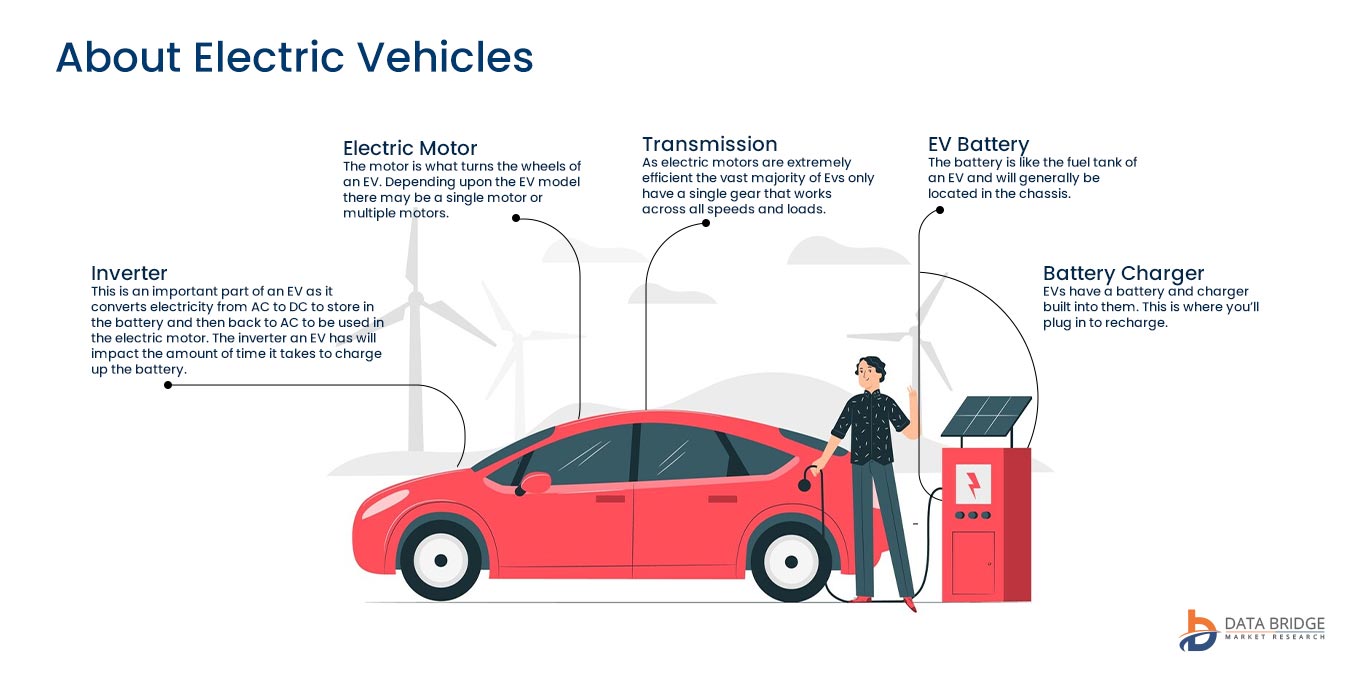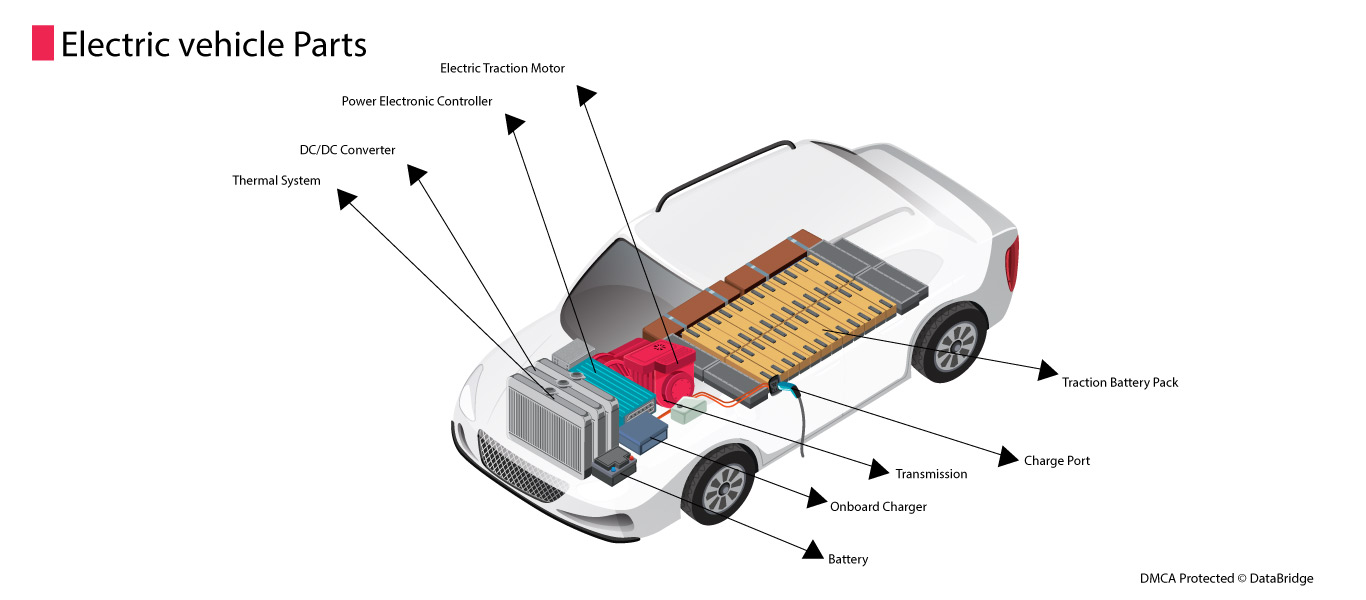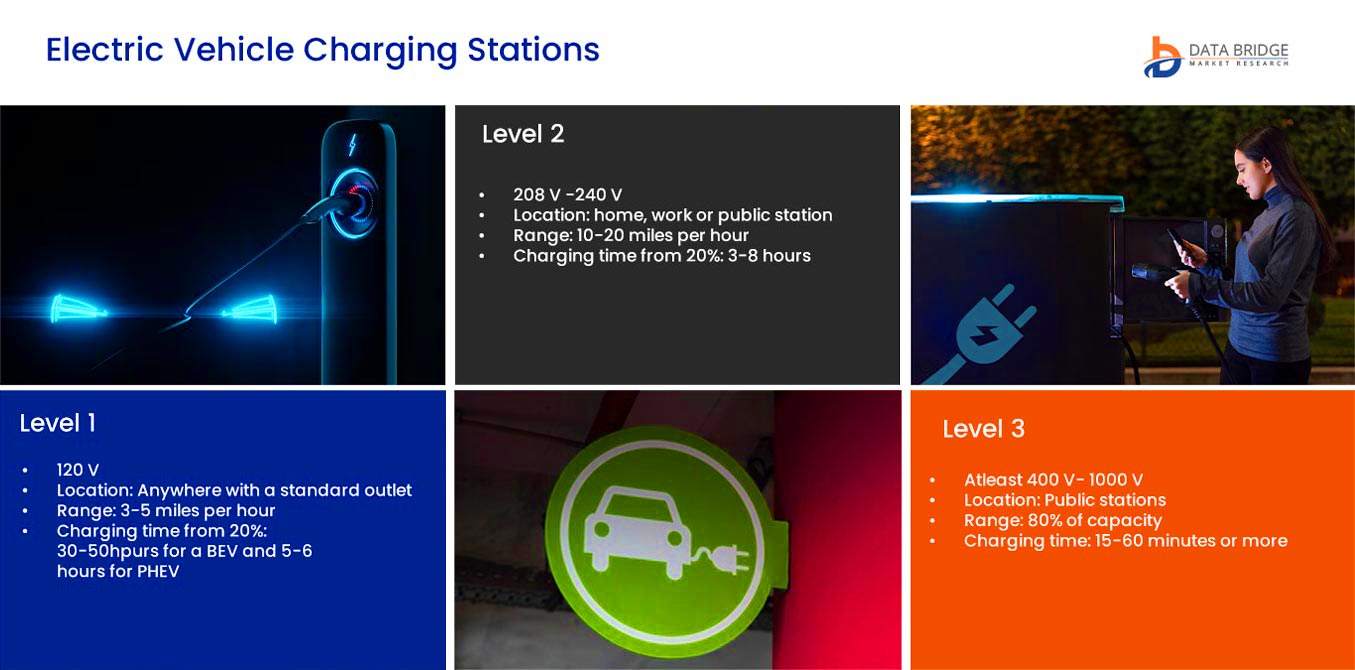Introduction
Electric vehicles (EVs) represent a transformative shift in the automotive industry, relying on electric motors powered by large batteries instead of traditional internal combustion engines fueled by gasoline. Offering eco-friendly transportation and a departure from the need for frequent visits to gas stations, EVs are characterized by their advancing driving ranges, reaching from 80 to over 300 miles on a single charge. Not only do EVs contribute to a cleaner environment, but they also require less maintenance compared to conventional vehicles, as they lack components such as oil systems and exhaust systems. As technological innovations continue, electric vehicles are gaining popularity for their sustainability and the promise of a greener future in transportation.
How EVs are Transforming Transportation with Low-Maintenance Effortlessly?
The rise of electric vehicles (EVs) signifies a pivotal moment in the automotive sector, signaling a departure from traditional internal combustion engine vehicles. Characterized by electric motors driven by advanced battery systems, EVs are at the forefront of a technological evolution that prioritizes sustainable and environmentally conscious mobility solutions. This paradigm shift aligns with the business imperative to address ecological concerns associated with conventional gasoline-powered vehicles, positioning electric vehicles as key contributors to corporate sustainability agendas.
The convenience of not having to visit a gas station is a notable lifestyle change for EV owners. Vehicles can be charged at home using a dedicated charging station or a standard electrical outlet. Public charging infrastructure is also expanding, providing additional options for on-the-go charging. This flexibility and the ability to charge at home contribute to the growing appeal of EVs.
Beyond the environmental and range benefits, the maintenance requirements of all-electric vehicles differ significantly from traditional internal combustion engine cars. Since EVs don't have an engine with many moving parts, they require less maintenance overall. Below are some key points:
- No Oil Changes: Internal combustion engines require regular oil changes to lubricate moving parts. In contrast, electric motors in EVs don't use oil, eliminating the need for oil changes
- No Exhaust System Maintenance: EVs lack traditional exhaust systems, eliminating concerns related to components such as catalytic converters. This reduces maintenance costs associated with exhaust system repairs
- Fewer Moving Parts: Electric vehicles have fewer moving parts than traditional vehicles. They don't have complex transmissions, and there's no need for components such as spark plugs. This simplicity can result in fewer breakdowns and less frequent maintenance
- Regenerative Braking: Many EVs use regenerative braking systems, which can extend the life of brake components. The system converts kinetic energy back into electrical energy during braking, reducing wear on traditional brake systems
Electric Mobility's Rapid Growth in Batteries, Connectors, and Charging Stations
- Electric Batteries
The transformative potential of electric vehicle batteries extends beyond environmental benefits, presenting a compelling case for market growth. Unlike the non-renewable nature of old fueling systems, electric batteries can be charged with renewable energy sources, positioning them as a sustainable and forward-thinking option for businesses and consumers alike. The consequential reduction in heavy pollution associated with conventional fuels contributes to a cleaner and healthier environment.
Moreover, the financial landscape of electric vehicles adds a strategic dimension to their adoption. With significantly lower road tax and registration fees, electric vehicles become environmentally conscious and economically attractive. This unique proposition has the potential to drive market growth and reshape consumer preferences toward cleaner and more sustainable transportation options.
Looking closely at market dynamics, the electric vehicle battery market is segmented based on type, form, application, capacity, bonding type, vehicle type, enduser, and material. This comprehensive segmentation allows for a deep analysis of meager growth segments within the industry. By providing decision-makers with valuable market insights, this framework enables strategic decision-making and identification of core market applications, thereby facilitating informed choices in navigating the evolving landscape of clean energy solutions.
According to a comprehensive analysis by Data Bridge Market Research, the electric vehicle battery market, valued at USD 49.22 billion in 2022, is projected to reach USD 206.61 billion by 2030, at acompound annual growth rate (CAGR) of 19.64% during the forecast period.
To know more about the study visit, https://www.databridgemarketresearch.com/reports/global-electric-vehicles-battery-market
- Electric Connectors
A crucial component in the electric vehicle (EV) ecosystem, a connector serves as the conduit for electrical energy transfer from the charging station to the EV battery pack. This pivotal interaction is facilitated through a charging connector, similar to the familiar charging cable used for mobile phones. Just as a mobile phone cable comprises a wall connector and a phone-side connector, an EV battery pack's charging connector features a vehicle-side connector and a charger plug connector. The charging process, resembling the everyday act of charging a mobile device, underscores EV charging systems' user-friendly and intuitive nature.
Diving into the specifics of the market landscape, the electric vehicle connectors market is segmented across various dimensions, including type, material, current type, charging speed, mounting type, cable type, level, end user, sales channel, and vehicle type. This nuanced segmentation enables a comprehensive analysis of even the most niche growth segments within the industry. By providing stakeholders with valuable market insights, this segmentation approach equips decision-makers with the tools needed to make informed and strategic decisions, identifying core market applications and optimizing market positioning.
According to a comprehensive analysis by Data Bridge Market Research, the electric vehicle connectors market is poised for significant growth, with an anticipated value reaching USD 169,019.42 Thousand by 2029. This projection reflects a robust Compound Annual Growth Rate (CAGR) of 17.6% during the forecast period.
To know more about the study visit, https://www.databridgemarketresearch.com/reports/global-ev-connectors-market
- Electric Charging Stations
An electric vehicle (EV) charging station stands as a pivotal infrastructure component, catering to the charging needs of electric and hybrid automobiles. The intricate functionality of these stations involves a sophisticated interplay of components, including the power grid, software applications, energy controllers, network operations centers, facility meters, and energy conversion mechanisms. The charging devices themselves are designed to accommodate various charging levels. Level 1 stations utilize standard household outlets, Level 2 stations cater to all-electric vehicles, and Level 3 stations serve as direct current (DC) fast chargers, offering rapid charging capabilities.
As the global electric vehicle user base expands, a demand for robust charging infrastructure is rising. Industry players are strategically focusing on maximizing the deployment of charging stations and points to meet the operational requirements of the growing fleet of electric vehicles. This surge in demand necessitates the development of comprehensive charging setups, prompting substantial advancements in both home and outdoor charging solutions to align with evolving customer preferences.
Governments worldwide are playing a pivotal role in fostering the growth of the electric vehicle market by demonstrating a positive stance and implementing initiatives to promote electric vehicles. This, in turn, contributes significantly to the escalating demand for electric vehicle charging stations. Recognizing the importance of sustainable transportation and reducing carbon footprints, governments are incentivizing the deployment of charging infrastructure, thereby creating a conducive environment for market growth.
According to Data Bridge Market Research analysis, the electric vehicle charging stations market, valued at USD 16.9 billion in 2022, is projected to experience a remarkable surge, reaching USD 194.78 billion by 2030, at aCompound Annual Growth Rate (CAGR) of 35.74% during the forecast period.
The market report provides valuable market insights, including market value, growth rate, market segments, geographical coverage, and key market players and encapsulates a comprehensive view of the evolving market scenario.
To know more about the study visit, https://www.databridgemarketresearch.com/reports/global-electric-vehicle-charging-stations-market
Power and Perks of Electric Vehicles
- Environmental Sustainability
The adoption of electric vehicles significantly reduces emissions, addressing air quality concerns and contributing to global efforts to combat climate change. According to the U.S. Environmental Protection Agency (EPA), traditional internal combustion engine vehicles are substantial contributors to air pollution, emitting pollutants such as carbon monoxide, nitrogen oxides, and particulate matter. With their zero tailpipe emissions, EVs play a pivotal role in mitigating these environmental challenges.
- Economic Efficiency
Electric vehicles offer economic advantages, with lower maintenance costs and higher energy efficiency. A study by the U.S. Department of Energy highlights EVs' significantly reduced maintenance costs due to fewer moving parts. Additionally, the U.S. Department of Transportation notes that electric vehicles can be two to three times more energy-efficient than traditional vehicles, translating to potential long-term cost savings for consumers.
- Energy Efficiency
Electric vehicles showcase higher energy efficiency compared to internal combustion engine vehicles. The Union of Concerned Scientists reports that EVs convert about 77% of electrical energy from the grid to power at the wheels, whereas internal combustion engines are only about 12-30% efficient. This efficiency contributes to reduced energy consumption and aligns with global efforts to transition toward sustainable and energy-efficient transportation solutions.
- Technological Innovation
The development and adoption of electric vehicles drive innovation in battery technology and charging infrastructure. Investments in research and development have led to improvements in battery energy density, charging speed, and overall performance. Companies such as Tesla have played a pivotal role in advancing battery technology, addressing concerns such as "range anxiety" and pushing the boundaries of electric vehicle capabilities.
- Public Health Improvements
Electric vehicles improve public health by reducing air pollution in urban areas. The World Health Organization (WHO) identifies air pollution as a major environmental risk to health. The elimination of tailpipe emissions from EVs directly contributes to improved air quality, diminishing the incidence of respiratory diseases and reducing related healthcare costs.
- Noise Reduction
Electric vehicles contribute to noise reduction, offering a quieter urban environment. The quiet operation of EVs is particularly advantageous in densely populated areas, reducing noise pollution and contributing to a more peaceful and livable community. This characteristic aligns with the increasing emphasis on creating sustainable and people-centric urban spaces.
- Enhanced Driving Experience
From a consumer perspective, the driving experience of electric vehicles is enhanced by the smooth and instantaneous power delivery of electric motors. The torque from electric motors is available instantly, providing responsive acceleration. Additionally, regenerative braking, a feature common in many electric vehicles, captures and stores energy during braking, enhancing overall energy efficiency and extending the vehicle's range.
Power Players and Growth Frontiers in the Electric Vehicle
Regions That Dominate Electric Vehicle Market
- China has been a dominant player in the electric vehicle market, both in terms of production and consumption. The Chinese government has implemented supportive policies and incentives to encourage the adoption of electric vehicles, contributing to the country's leadership in the market.
- European countries, particularly Norway, the Netherlands, Germany, and the U.K., have shown significant growth in electric vehicle adoption. Strict emission regulations and favorable government policies and incentives have fueled the demand for electric vehicles in these regions.
- In North America, U.S. and Canada have also been important markets for electric vehicles. Tesla, based in the U.S., has been a key player in driving electric vehicle adoption globally.
Growing Regions in Electric Vehicle Market
- Beyond China, other countries in the Asia-Pacific region, such as Japan and South Korea, have witnessed a growing interest in electric vehicles. Governments in these countries are increasingly promoting electric mobility as part of their sustainable transportation initiatives.
- The European electric vehicle market has been experiencing rapid growth, driven by ambitious targets to reduce carbon emissions and boost the electric vehicle charging infrastructure. Several European countries have set aggressive timelines to phase out internal combustion engine vehicles.
Key Market Players in Electric Vehicle Market
The global electric vehicle market is characterized by key players that have significantly influenced its trajectory. Tesla, Inc., stands out as a major disruptor, renowned for its innovative electric cars and advancements in battery technology. Not only has Tesla played a crucial role in popularizing electric vehicles worldwide, but it continues to lead the charge in shaping the industry's future. Nissan Motor Co., Ltd., is another prominent player, with its Nissan Leaf being one of the pioneering mass-produced electric vehicles. Nissan maintains its influence as a key contributor to the ongoing evolution of electric mobility.
From China, BYD Company Limited has emerged as a leading electric vehicle manufacturer, commanding a strong presence in both domestic and international markets. BYD's commitment to innovation and sustainability has positioned it as a key player in the dynamic electric vehicle landscape. Volkswagen Group, a global automotive giant, has made substantial investments in electric vehicle technology, aiming to secure a significant market share with models such as the ID. series. General Motors Company is also actively shaping the electric vehicle market, evidenced by initiatives such as the Chevrolet Bolt and strategic plans for a broader electric vehicle lineup. These key players collectively drive the growth and transformation of the electric vehicle market, with each contributing to the ongoing revolution in sustainable transportation.
Please note that the electric vehicle market is dynamic, and new developments may have occurred since my last update. For the latest and most accurate information, I recommend checking recent reports, industry analyses, and news updates related to the electric vehicle market.
Conclusion
In the ever-evolving realm of transportation, electric vehicles (EVs) have emerged not just as a mode of conveyance but as emissaries of a transformative era. As our world grapples with environmental challenges, the silent hum of electric motors ushers in a new dawn of sustainable mobility. Beyond being eco-friendly, the economic allure of EVs with their lower maintenance costs and heightened energy efficiency establishes them not just as vehicles but as economic and environmental assets.
The growth of electric mobility extends beyond the sleek chassis of EVs to encompass the entire ecosystem. From the burgeoning electric vehicle battery market to the intricate web of connectors and charging stations, the industry's vibrancy is a testament to a shift towards a cleaner, greener tomorrow. Regions like China, Europe, and North America are leading the charge, backed by visionary governments and pioneering corporations. In the race toward sustainable transportation, the journey is as significant as the destination, promising a future where electric vehicles not only redefine our commutes but rewrite the narrative of how we tread upon the planet we call home. The road ahead is charged with promise, and as we navigate it, we accelerate towards a tomorrow where innovation and sustainability coalesce on the roads we travel.














